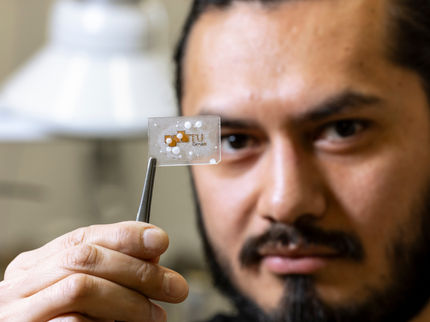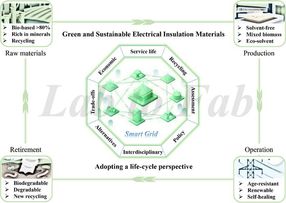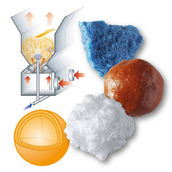A mineral provides the template: peptides assemble into arrays of flat nanotapes on mica surfaces
Advertisement
composite materials are catching on in technological applications. Take for example the hybrid structures of metal and plastics that are incorporated into many components of our cars. Nature also frequently works with an interesting class of composite materials: composites of proteins and inorganic compounds. In these cases, the proteins usually act as a kind of instruction set for the assembly of the mineral components into a precisely defined structure. This is how the bizarre frameworks of diatoms are formed, for example, as well as our teeth. Contrastingly, inorganic "substrates" can also induce proteins to aggregate into extended structures. A team of British and American researchers has now put a new slant on these processes.
The work itself was done primarily by Conor Whitehouse, working in a group headed by Neville Boden. This group have been learning in recent years how to make small peptides, which, above a particular concentration in solution, have the unique ability to spontaneously self-assemble into long tape-like aggregates a single molecule in thickness-reminiscent of pieces of tagliatelle. These small tagliatelle are twisted and this causes them to intertwine each other and stack into more complex fibrils that look just like pieces of fusili.
Surprising things happen when a solution containing single, isolated molecules of these peptides is deposited onto a muskovite surface. Muskovite is a mica, a scaly mineral with a pearlescent shine. Here the peptide molecules undergo side-by-side self-assembly into elongated, flattened, tapes. The tapes only grow in length until they bump into another tape, which results in a "monolayer". "Thus, the tapes are not twisted as they are in solution; instead, they lie flat on the surface," reports Whitehouse. "They have to untwist themselves, which they do when the binding energy between the peptide and the mica is high enough," says Whitehouse, "what holds the tapes on the mica appears to be an electrostatic attraction between charged groups in the peptides and oppositely charged ions in the crystal lattice."
When in contact with solution, the tapes have a hexagonal arrangement reflecting the symmetry of the mica surface. However, when the solvent is carefully removed, the organization of the tapes on the surface changes dramatically. "We can thus obtain densely packed monolayers of tapes with an extended parallel organization," says Whitehouse, "this is practically important because it enables surface coatings to be made into which protein-like functionality could be incorporated."






























































